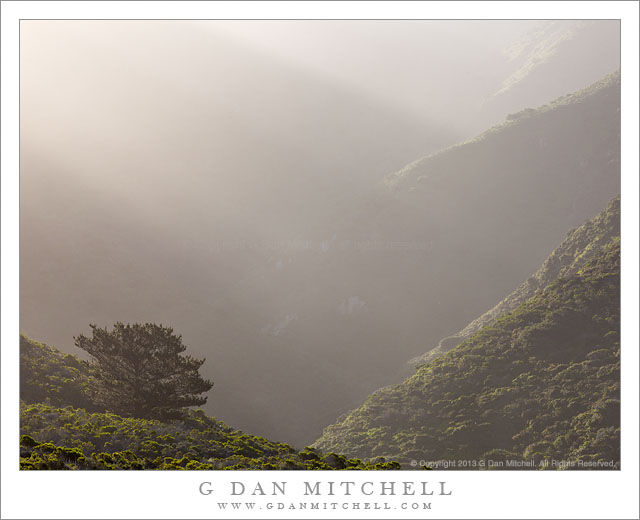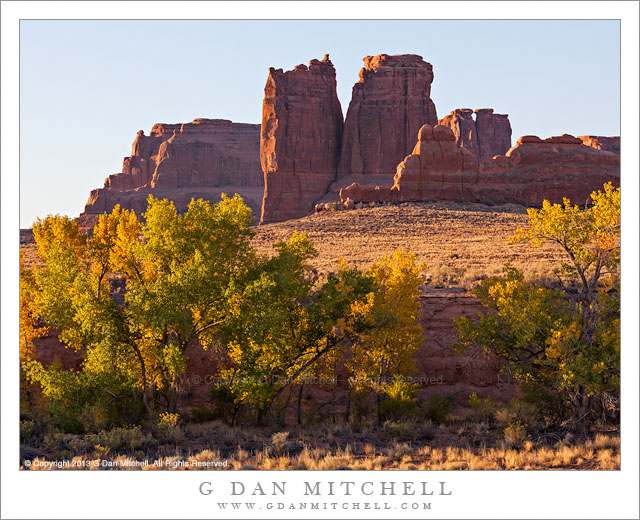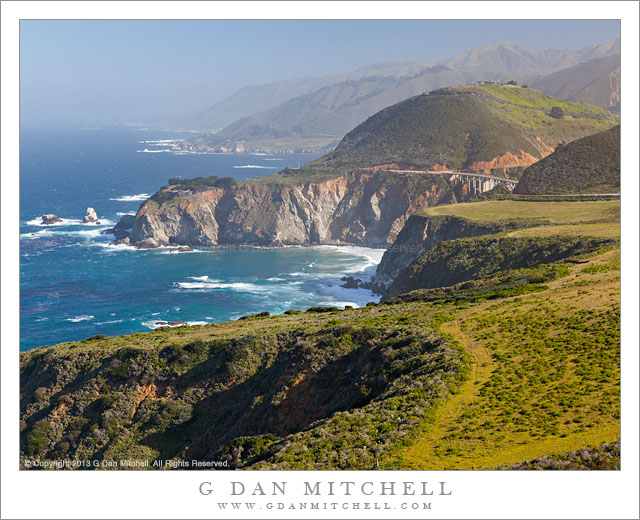Canyon Light, Big Sur. Pacific Coast Highway, California. April 14, 2013. © Copyright 2013 G Dan Mitchell – all rights reserved.
A solitary tree stands on a hillside at the base of a rugged canyon filled with morning light and haze
I have driven past this canyon many times, even stopping to hike up into it on more than one occasion. I’m usually there in the morning, when the early sun is just clearing the top of the high ridge beyond the canyon, and backlight streams down into the canyon, sometimes so bright that it is almost impossible to look up into it.
This was one of those mornings. As I got to the Monterey Peninsula I was initially surprised by the amount of haze in the air, since it was supposed to be – and actually was! – a very windy day. This was good news, though, since I love atmosphere that is not crystal clear. A few fog clouds were trying to form over some of the higher hills, but mostly the air was just filled with this semi-opaque, luminous haze that gave form to the light passing through it. As I arrived at this spot I looked to my left out of habit and first thought that it might be too hazy to produce a photograph that showed the faint details that I was interested in. But since I was there and this was a lot more interesting than the view out over the ocean, I stopped and took a look, soon finding a composition that placed the solitary tree silhouette near the bottom of the frame and anchored the scene, the rest of which was very atmospheric and subtle.
 G Dan Mitchell is a California photographer and visual opportunist whose subjects include the Pacific coast, redwood forests, central California oak/grasslands, the Sierra Nevada, California deserts, urban landscapes, night photography, and more.
G Dan Mitchell is a California photographer and visual opportunist whose subjects include the Pacific coast, redwood forests, central California oak/grasslands, the Sierra Nevada, California deserts, urban landscapes, night photography, and more.
Blog | About | Flickr | Twitter | Facebook | Google+ | 500px.com | LinkedIn | Email
Text, photographs, and other media are © Copyright G Dan Mitchell (or others when indicated) and are not in the public domain and may not be used on websites, blogs, or in other media without advance permission from G Dan Mitchell.



